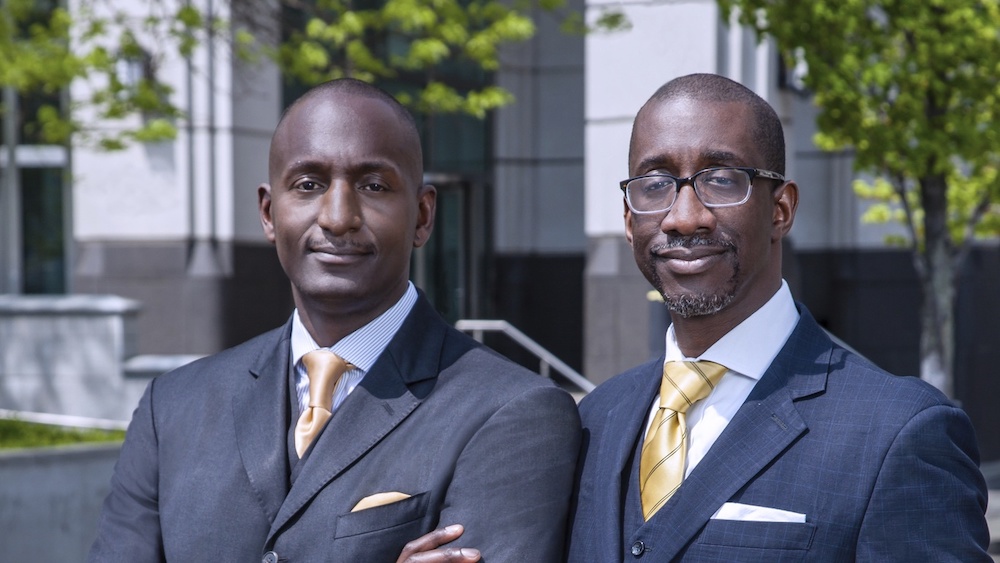If you’re interested in sharing your opinion on any cultural, political or personal topic, create an account here and check out our how-to post to learn more.
____
Craig Arnold at Eaton.
Rosalind Brewer at Walgreens.
Thasunda Duckett at TIAA CREF.
Marvin Ellison at Lowes.
Rene Jones at M&T Bank.
As of Black History Month 2022, there are only five Black CEOs of Fortune 500 companies. Let that sink in.
1, 2, 3, 4, 5.
That’s 1% of the total list. That means there is literally 99% (495) of the list of CEOs who are not Black. Should we care? Is it important there are not more Black faces in high places?
In our book, Black Faces in High Places: 10 Strategic Actions for Black Professionals to Reach the Top and Stay There, we say the answer is yes! We should care! Corporate America should care and so should every other industry and sector of our economy.
Black leadership matters, and here are three reasons why:
1. Fortune 500 represents the largest players in the global economy.
According to Fortune, these companies represent two-thirds of U.S. GDP — approximately $13.8 trillion and more than 28 million employees worldwide. Having a Black woman or man at the helm of a company that is making that kind of economic impact is not only symbolic, it can be substantive. Unfortunately, for the last 67 years, the number of Black CEOs on this list of 500 has been no more than seven.
2. CEOs set the strategic priorities of their company.
CEOs can also determine what kinds of initiatives and social investments are made by these organizations. But, this does not apply only to corporations. Consider the largest philanthropic organization in America. When foundations, with all of their assets and resources, turn their attention to issues of inequality, equity and justice, real change is possible. When Black, Indigenous and other people of color make it to the top of their organizations, we can transform systems and institutions with those resources.
3. If there are only five Black women and men leading Fortune 500 companies, shouldn’t we be asking why?
What is happening in these companies that so few Black executives make it to the very top of the organization? Thousands of pages have been written about the challenges that Black professionals face in business and entrepreneurship. One thing is certain: America is not a meritocracy where you are certain to be rewarded for accomplishment.
We know that executive talent and abilities are equally distributed across all identity groups. Access to power and influence is not.
Numerous studies have detailed how the challenges of racism and sexism are real and there is an incredible cost that society pays for these ills. When these companies figure out how much money and productivity racism and sexism is costing them, they spend billions of dollars to address racial equity and bring more diversity, equity and inclusion into their organizations. The lack of Black CEOs is indicative of the problem in their organization and does not say anything about the talent pool.
To change the top of organizations, we need more people who are fully equipped to make the journey to the top and remain there. In our book, we tell the stories of Black professionals who have navigated their industry, field, sector and career to build wealth and make a difference in the world — especially in the Black community. Sometimes, they do this inside existing large-scale organizations. Sometimes, they build their own companies and institutions. Our book distills 10 strategic actions they have embraced, such as exercising self-determination, developing self-mastery and seeking significance. It is the culmination of many hours of research and draws on the life lessons and professional experiences of Black women and men who have successfully overcome the inevitable hurdles to become a Black face in a high place.
These Black executives and entrepreneurs demonstrate that being a Black face in a high place means achieving a certain level of power and influence, delivering value to customers and stakeholders, and giving back to the local or global community. The Black leaders we spoke to connect their professional life with a deeper sense of meaning and a larger agenda. We think that is an important insight.
If Black professionals don’t see themselves as part of a grounding mission and larger agenda for equity, justice and transformation, then the Black community will remain stagnant with one or two examples of success stories and a slow stream of “Black firsts” who crack the ceiling without paving the way for “Black seconds,” “Black thirds” and so on. This is not ideal because we cannot see collective progress with so few Black people at the table of power and influence. We must be able to develop a sea of “Black faces” who make sure that the Black community is included, valued and treated fairly. We wrote this book to share the journey of successful Black leaders and, based on their lessons learned, outline a roadmap for others who aspire to navigate various crossroads, reach the top and stay there without losing themselves along the way.
We want there to be more Black leaders at the top of their organizations — and Black entrepreneurs, and Black foundation presidents, and Black college and university presidents, etc. — because Black leadership matters!
____
Dr. Jeffrey Robinson and Dr. Randal Pinkett are scholars, entrepreneurs and the authors of ‘BLACK FACES IN HIGH PLACES: 10 Strategic Actions for Black Professionals to Reach The Top And Stay There.'
